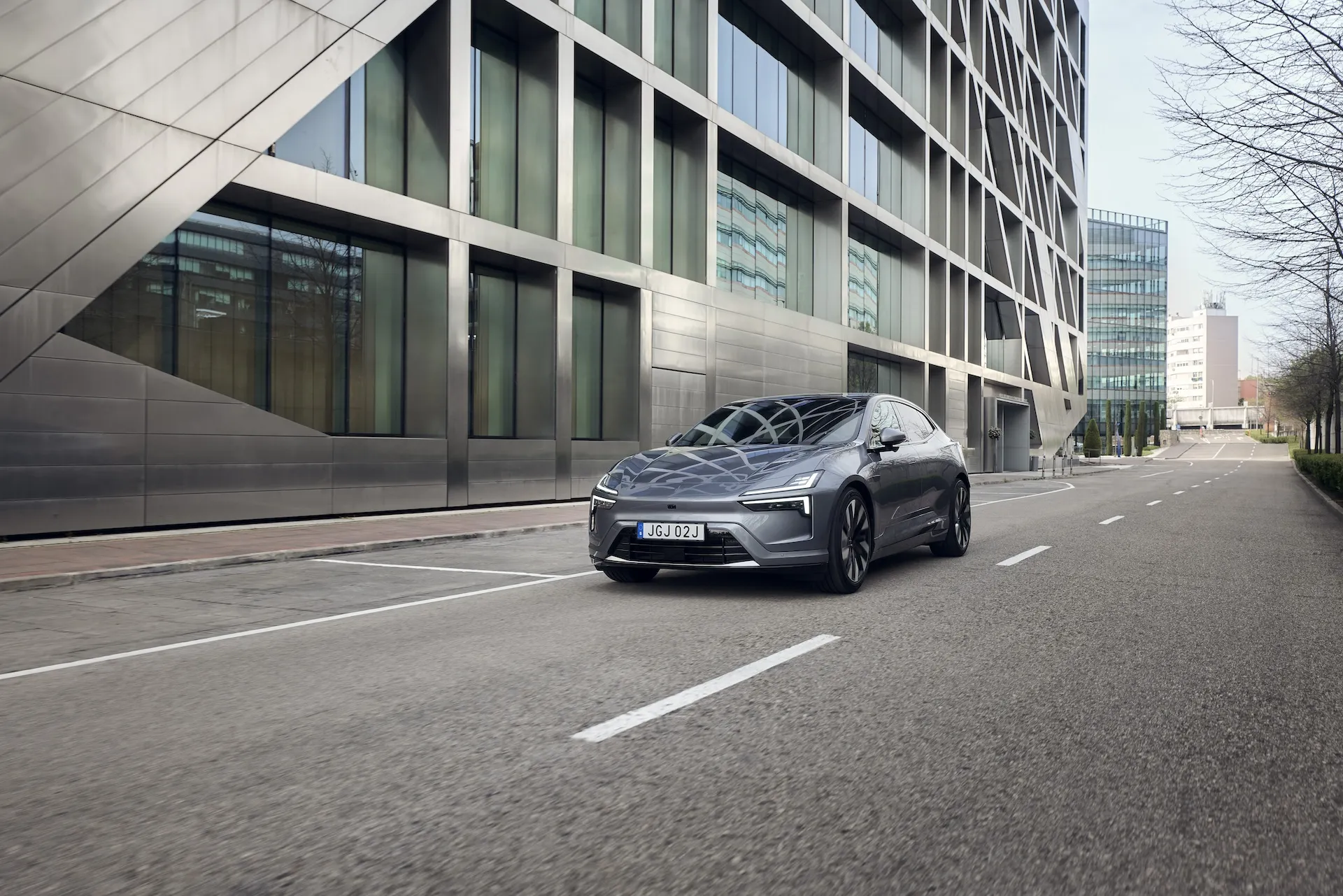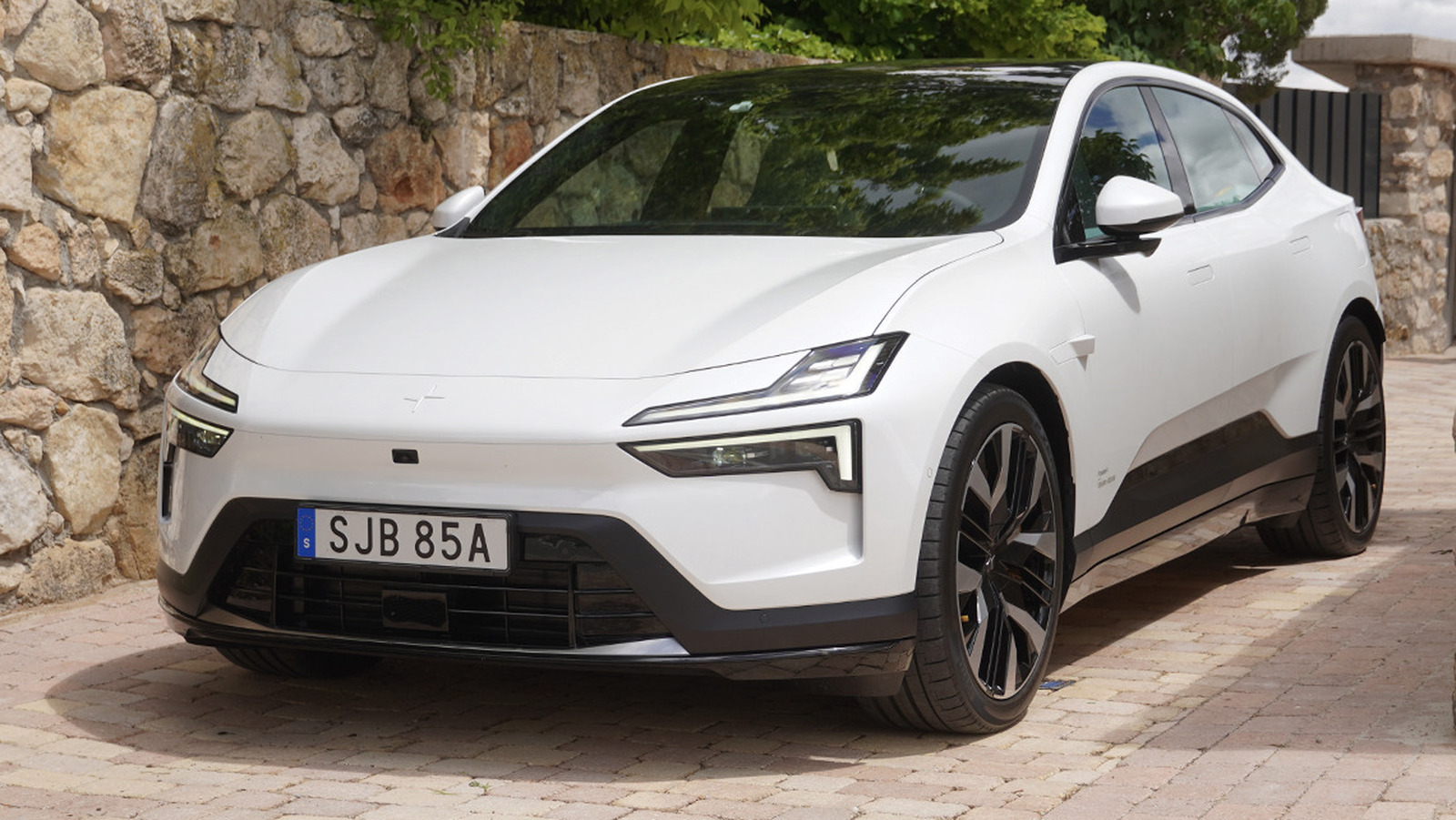The Polestar 4 electric vehicle is targeting competitors like the Porsche Macan, BMW iX3 and Audi Q6 E-tron. With a starting price of £59,990.

Also Read: Rimac Launches Verne, A Two-Seater Robotaxi
The Polestar 4 stands out with its windowless beetleback design in place of a traditional rear screen, drawing attention for its uniqueness. It aims to be a fusion of an SUV, coupé, executive car and sports car all in one.
Its long, low-slung profile (4.84m long and 1.53m tall) adds to its distinctive appearance making it hard to categorize neatly within traditional automotive segments.
The design is very aerodynamic contributing to its performance. The lack of a rear windscreen might be off-putting for some as it affects rear visibility.
The Polestar 4 cleverly maintains a spacious interior making it a practical choice for families.
Tthe Polestar 4 offers plenty of space and comfort with a refined ambiance that leans heavily on Scandinavian design principles. The use of high-quality materials including textured textiles and optional nappa leather.
The infotainment touchscreen is intuitive with large icons and adaptive functions. Some aspects such as the air-con vents controlled via the screen and the laggy pre-production infotainment system.
Polestar has managed to provide ample headroom in the rear, thanks to a clever design kink near the rear of the roof. The rear seats are plush and can recline.
The vehicle has a 526 litres of boot space including a 15-litre ‘frunk’ for additional storage making it a practical choice for everyday use.
The absence of a traditional rear windscreen necessitates reliance on a rear-view camera, which, despite being high-definition doesn’t quite match the clarity of a standard rear-view mirror.
Targeting competitors like the Genesis GV60, Tesla Model Y and even internal combustion engine (ICE) models like the BMW X4.
The brand has struggled to achieve profitability and the Polestar 4 is seen as a model that could either solidify its market position or exacerbate its struggles.
The Polestar 4 is built on the Sustainable Experience Architecture (SEA) platform, a departure from the Volvo-derived platforms used for the Polestar 2 and 3.
The SEA platform is shared with Geely’s Zeekr models, the Polestar 4’s commitment to innovation and uniqueness.
The absence of a rear window is a striking design decision aimed at reducing the vehicle’s height and enhancing aerodynamics. This feature is complemented by a sleek, low-slung roofline that distinguishes the Polestar 4 from its competitors.
The Polestar 4 offers two powertrain options, Single-Motor RWD: Delivers 272 horsepower. Dual-Motor AWD has 544 horsepower.
Both variants are equipped with a 94 kWh usable (100 kWh gross) battery, offering a range of 300 miles for the RWD version and 270 miles for the AWD version.
Despite sharing a production line with the Zeekr 001, the Polestar 4 opts for magnetic-style active dampers and a 400-volt-class architecture.
The Polestar 4 delivers a dynamic driving experience in the dual-motor version with the Performance Pack.
It corners with agility to the capable SEA platform and accelerates reaching 60 mph in just 3.7 seconds.
The Polestar 4’s interior is spacious and well-appointed with generous legroom and comfortable, adjustable seats.
The fit and finish are exceptional with high-quality materials used throughout the cabin. The car features Polestar’s Google Android-based infotainment system, which is both visually appealing and user-friendly.
The landscape-oriented screen enhances usability with a well-organized interface and a distinctive solar-system-themed ambient lighting that adds a unique touch.
Also Read: 2025 BMW M5: A Sedan with 717-HP Hybrid Powertrain
Polestar justifies the removal of the rear window by highlighting the benefits of increased interior space and improved aerodynamics.
The absence of the window allows for a more flexible cargo area and contributes to the car’s sleek design.
The elimination of the rear window has practical drawbacks. The interior feels more enclosed and the rear-view camera system does not adequately replace the functionality of a traditional rear window.
With a range of 270 miles,, its 400-volt architecture limits its charging speeds compared to the 800-volt systems used by some of its platform mates like the Zeekr 001. The Polestar 4 supports fast charging achieving a 10-80% charge in 30 minutes at 200 kW.
The single-motor Polestar 4 delivers 268bhp and 253lb ft of torque to the rear wheels, allowing for a 0-62mph sprint in 7.1 seconds. It has sufficient power for most driving scenarios providing a smooth and responsive driving experience.
The dual-motor option with its 536bhp and 506lb ft of torque, transforms the Polestar 4 into a high-performance vehicle capable of reaching 0-62mph in just 3.8 seconds.
The brake feel is satisfactory for most driving conditions although it can be somewhat unpredictable during slow-speed maneuvers.
Regenerative braking settings are adjustable via the touchscreen, but a more varied range and easier controls through paddles would be appreciated.
The Polestar 4 excels in ride comfort, particularly at higher speeds where it feels settled and composed.
The dual-motor model with the Performance pack has a firmer ride and more responsive handling, rivaling the driving dynamics of BMW and Porsche competitors.
The single-motor version provides a more balanced and comfortable experience for everyday driving.
While the Polestar 4 is fun to drive, it doesn’t quite match the engagement levels of the BMW i4 or Porsche Macan.
The vehicle’s handling is competent, but it lacks the tactile feedback and weight management seen in some of its rivals.
The Polestar 4 comes well-equipped with standard features like a heat pump, keyless entry, heated seats, a 360-degree parking camera, adaptive cruise control and ambient lighting.
While the Polestar 4 is priced higher than some alternatives like the Tesla Model Y, its extensive list of standard features and range of up to 385 miles make it a competitive option within its class.
Expect a practical driving range of around 280 to 360 miles, depending on driving conditions, making it a reliable choice for long-distance travel.
Also Read: Bugatti Tourbillon: A $4 Million Hybrid Hypercar with 1,800 Horsepower






















